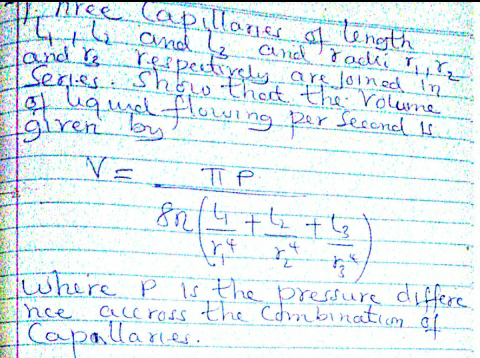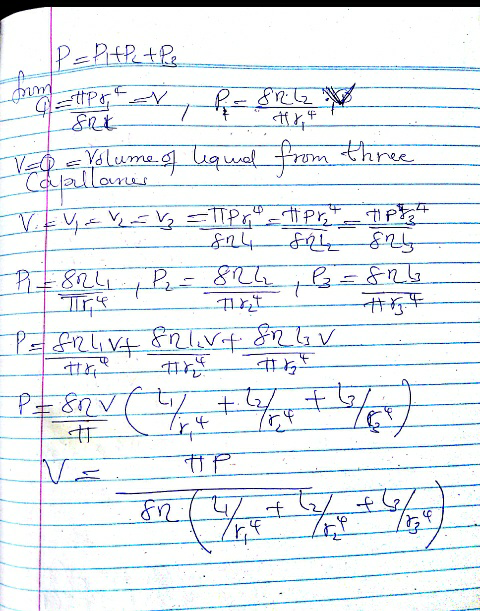
Question and Answers Forum
Question Number 52787 by peter frank last updated on 13/Jan/19

Answered by tanmay.chaudhury50@gmail.com last updated on 13/Jan/19
![flow of fluid in pipe formula (dV/dt)=((△p×πr^4 )/(8ηl))=((△p)/((8ηl)/(πr^4 ))) compare it with flow of current in resistance.. here current i→(dV/dt) potential difference→△p resistance→((8ηl)/(πr^4 )) so cappilary joined in series is equivalant to resistance in series connection (R_(eq) =R_1 +R_2 +R_3 +... Resistance in series) same way equivalant viscous resitance ((8ηl_1 )/(πr_1 ^4 ))+((8ηl_2 )/(πr_2 ^4 ))+((8ηl_3 )/(πr_3 ^4 )) now use formula current=((p.d)/(resistance))=(V/(R_1 +R_2 +R_3 ))=i similar way rate of flow (dV/dt)=((△p)/(((8ηl_1 )/(πr_1 ^4 ))+((8ηl_2 )/(πr_2 ^4 +))+((8ηl_3 )/(πr_3 ^4 ))))=((π△p)/(8η((l_1 /r_1 ^4 )+(l_2 /r_2 ^4 )+(l_3 /r_3 ^4 )))) so answer is (dV/dt)=((πp)/(8η((l_1 /r_1 ^4 )+(l_2 /r_2 ^4 )+(l_3 /r_3 ^4 )))) [given △p=p]](Q52788.png)
Commented by peter frank last updated on 13/Jan/19

Answered by peter frank last updated on 13/Jan/19

